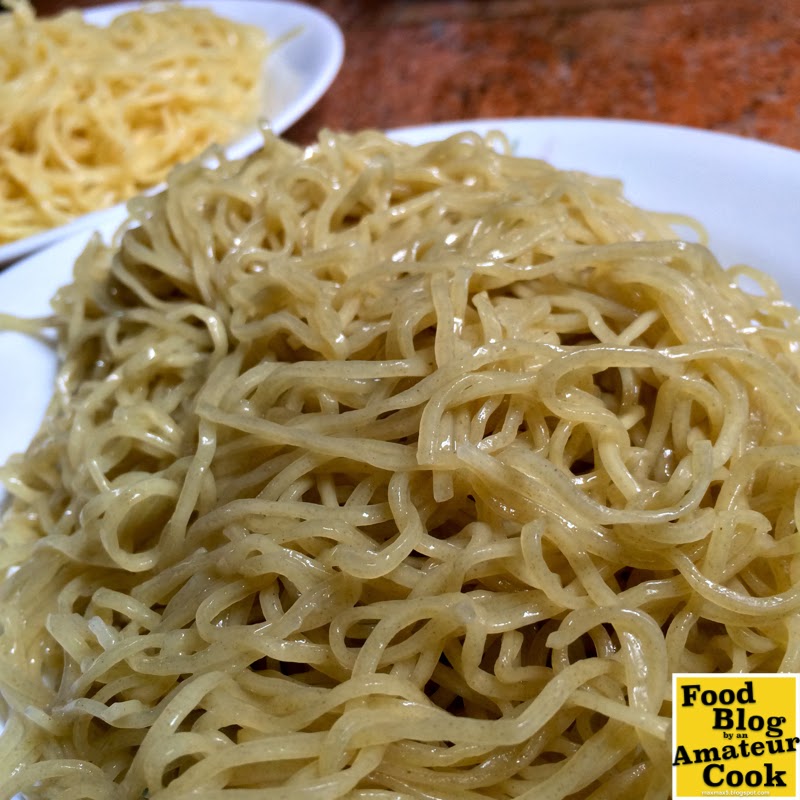Visited a noodle factory and found out how ingredients affect the colour and texture of the food. In this post, Im going to differentiate the noodle that we see almost every where anytime, used for the all famous Wantan Mee a.k.a. Wonton Mee or in Chinese 云吞面. Beware though some people may find below informations irritating or perhaps disgusting but this is just the fact so proceed with caution or leave now.
 |
| A Penang style Wantan Mee served in ceramic bowl. |
Dated back to ancient China where noodle was created, this everyday delicacy has since began famous all over. Even Marco Polo the Italian merchant traveller brought back this creation and eventually become the world famous pasta today. Noodle is accepted by all because of its content: flour and egg, which is carbohydrate and protein that provide energies to our daily need. We feel full eating noodle, that is why it is still remain as the primary energy source for some people today.
Understanding the basic of noodle, how these two simple humble ingredients yield different texture, aroma and colour of noodle? Well it will not be obvious if it is just by two ingredients alone, let's see the comparison picture i took below:
 |
| Freshly made this morning. What is the different you see? |
That's right, the one in the left side is greenish while the right one is yellowish. What i know from the manager, there is no colouring added to either type. The colour difference comes from the ratio of eggs to the flour. The greenish one was made with "all eggs" ratio while the yellowish one has chemical added. WHY?
The roles of the egg are to bind the flour together and give 'eggy flavour' to the noodle once cooked. However eggs are relatively expansive in noodle making industry, the more eggs added means the higher the unit cost of the noodle. The yellowish one is made with lesser egg to flour ratio and thus in order to bind the flour together to ensure the noodle will not 'disintegrate" while cooking in boiling water, lye (contains largely potassium carbonate), a.k.a alkaline water (鹼水) is added.
 |
| The cooked noodle. The 'all eggs' remained greenish while the one with chemical added became brighter. |
After brought them from the factory i headed home and cooked them directly to taste if there is any difference in texture. Both boiled for 60 sec and submerged in room temperature water for 10 sec and then into hot water again for 5 sec then tasting time. The all egg formula is significantly MORE SPRINGY than its counter part. Binded by the chemical, i actually spilled the other out after 3 chews. Why i have to eat a noodle added (im not sure should i use the term 'loaded') with chemicals and still not good in texture?
Ops, forget to mention an important point. Prior to cooking i actually smelled both noodles (my habit to understand the ingredients and yes i must confess here that i did it on the fish i cooked earlier and i almost vomit). It is very clear that with the all egg formula noodle, i smell very strong raw egg stench while the other one is pungent chemicals.
So now we know that with the all egg formula, we have better consistency in colour, eggy aroma before and after cook and more springy texture after cook. will we still choose the one with lye added? The cost per unit for the all egg formula is just at RM 0.50 while the other one is at RM 0.30. The choice is ours. (Note: To see how this noodle transform into one of the most acceptable hawker food in Penang, please click here)
Below is the process of making the egg noodle
 |
| Mixing Machine: Pouring eggs into flour. Pay attention to the dough below |
 |
| Pressing Machine: Roller press the dough into long sheet |
 |
| Another roller machine with flour pouring on top of the long sheet |
 |
| Resting. Will go through a slicing machine for final shape: noodle |

No comments:
Post a Comment